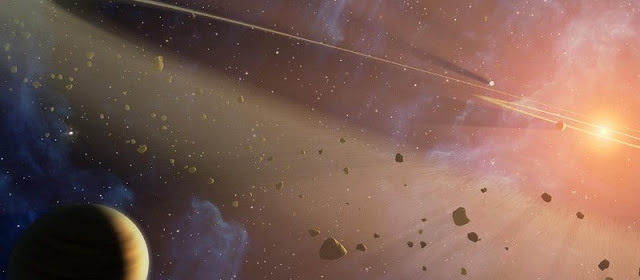The first signs of this space oddity came from NASA’s planet-hunting Kepler space telescope, which continually watched the star’s region of the sky between 2009 and 2013. Most planet-hosting stars show small, regular dips in light when their planets pass in front of them. But Tabby’s star dipped erratically throughout the four years, sometimes losing as much as 20 per cent of its brightness.
In September 2015, a team led by Tabetha Boyajian of Yale University, who lends the star its informal name, tried to make sense of this unusual signal. Ultimately they determined that dust from a large cloud of comets was the best explanation.
A month later, the star made headlines across the globe thanks to a paper by Jason Wright of Pennsylvania State University and his colleagues, who suggested that “alien megastructures”, such as satellites designed to collect light from the star, could be responsible for the signal.
While the prospect of aliens was first launched by Penn State astronomer Jason Wright, almost everyone in the astronomy community agreed that the chances that this was the case were "very low."
Now, the latest investigations into this strange star by Louisiana State University astronomer Bradley Schaefer have reignited the alien theory, New Scientist reported.
Now Bradley Schaefer of Louisiana State University has discovered that the mystery goes even further. When Boyajian’s team studied the star, they looked at data from a Harvard University archive of digitally scanned photographic plates of the sky from the past century or so to see if the star had behaved unusually in the past, but found nothing.
Schaefer decided this unusual star deserved a second look. He averaged the data in five-year bins to look for slow, long-term trends, and found that the star faded by about 20 per cent between 1890 and 1989. “The basic effect is small and not obvious,” he says.
To confirm the fade was real, Schaefer went to Harvard to look at the original photographic plates and inspected them by eye for changes, a skill few astronomers possess these days. “Since no one uses photographic plates any more, it’s basically a lost art,” says Wright. “Schaefer is an expert at this stuff.”
Schaefer saw the same century-long dimming in his manual readings, and calculated that it would require 648,000 comets, each 200 kilometres wide, to have passed by the star – completely implausible, he says.
In September 2015, a team led by Tabetha Boyajian of Yale University, who lends the star its informal name, tried to make sense of this unusual signal. Ultimately they determined that dust from a large cloud of comets was the best explanation.
A month later, the star made headlines across the globe thanks to a paper by Jason Wright of Pennsylvania State University and his colleagues, who suggested that “alien megastructures”, such as satellites designed to collect light from the star, could be responsible for the signal.
 |
| Dyson Sphere |
Now Bradley Schaefer of Louisiana State University has discovered that the mystery goes even further. When Boyajian’s team studied the star, they looked at data from a Harvard University archive of digitally scanned photographic plates of the sky from the past century or so to see if the star had behaved unusually in the past, but found nothing.
Schaefer decided this unusual star deserved a second look. He averaged the data in five-year bins to look for slow, long-term trends, and found that the star faded by about 20 per cent between 1890 and 1989. “The basic effect is small and not obvious,” he says.
To confirm the fade was real, Schaefer went to Harvard to look at the original photographic plates and inspected them by eye for changes, a skill few astronomers possess these days. “Since no one uses photographic plates any more, it’s basically a lost art,” says Wright. “Schaefer is an expert at this stuff.”
Schaefer saw the same century-long dimming in his manual readings, and calculated that it would require 648,000 comets, each 200 kilometres wide, to have passed by the star – completely implausible, he says.
 |
| Reignited Dyson sphere |

No comments :
Post a Comment